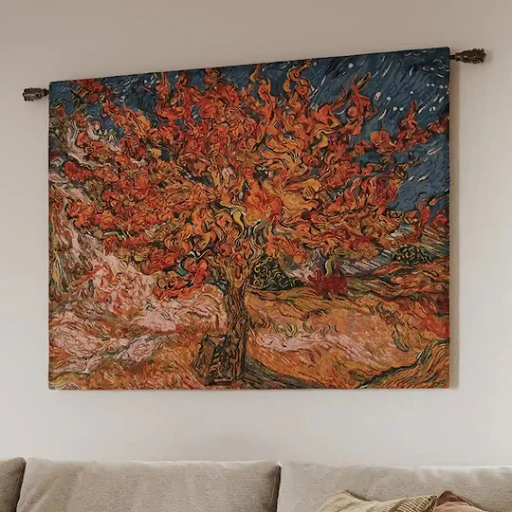Tapestries have long been more than just decorative elements; they are woven narratives that reflect personal identity, cultural heritage, and psychological nuances. By selecting specific designs and motifs, individuals communicate subtle messages about their values, beliefs, and emotions. Understanding the hidden symbolism in wall tapestries can offer profound insights into one’s personality and the ambiance they wish to cultivate within their living spaces.
The Historical Significance of Tapestries
Historically, tapestries served both functional and aesthetic purposes. In the Middle Ages and the Renaissance, they were not only used for insulation but also as symbols of authority and prestige. Richly woven tapestry panels, often depicting emblems, mottoes, or coats of arms, adorned the walls of castles and grand halls as a manifestation of power and status. Over time, these intricate pieces became treasured heirlooms, telling stories of history, mythology, and tradition.
Cultural and Spiritual Symbolism
Many wall tapestries incorporate designs with deep cultural and spiritual meanings. For instance, mandalas, which symbolize the universe and spiritual journey in Buddhism and Hinduism, are popular choices for wall tapestries. Such motifs bring a sense of harmony and mindfulness into a space. Similarly, Celtic knots, which represent eternity and interconnectedness, and Tree of Life designs, symbolizing growth and strength, infuse homes with deeper meaning and intention.
Psychological Reflections in Tapestry Choices
The selection of a big wall tapestry often reflects the homeowner’s personality and emotional state. According to psychology studies, personal decor choices are an extension of self-expression. For example, opting for a tapestry with vibrant colors and dynamic patterns may indicate an extroverted and energetic personality, while muted tones and minimalist designs suggest a preference for tranquility and simplicity.
Color psychology also plays a crucial role in tapestry selection. Warm hues like red and orange evoke passion and creativity, while cooler tones like blue and green create a calming atmosphere. Earthy tones in tapestry designs can convey stability and a deep connection to nature, making them a perfect choice for those who seek balance in their living environment.
Tapestries as Identity Statements
Wall tapestries are not just home decor; they are statements of personal identity. The themes and imagery chosen reflect a person’s aspirations, interests, and inspirations. A tapestry depicting a forest scene may indicate a love for nature and adventure, while celestial patterns might appeal to those with a fascination for astrology and cosmic mysteries. The presence of historical or medieval-themed tapestries can reveal an appreciation for heritage and storytelling.
Displaying a big wall tapestry in a home or workspace is akin to curating a personal gallery that speaks to one’s individuality. These fabric artworks allow for creative self-expression, transforming blank walls into meaningful reflections of their owners.
The Role of Tapestries in Modern Interior Design
In contemporary interior design, large wall tapestries are experiencing a resurgence as versatile decor elements that add texture, color, and personality to a space. They serve as focal points, create visual interest, and even influence the perceived size of a room. Whether used in bohemian-inspired rooms, minimalistic settings, or eclectic interiors, tapestries offer an effortless way to enhance aesthetic appeal.
Additionally, tapestries provide a sustainable and flexible alternative to traditional wall art. Unlike framed paintings or wallpaper, they can be easily swapped out to match seasonal decor changes or evolving tastes. This adaptability makes them an excellent choice for renters and homeowners who love to refresh their living spaces without permanent alterations.
Conclusion: Embracing the Large Tapestry
Incorporating a large tapestry into your home decor is more than an aesthetic choice; it’s a statement of identity, values, and emotions. By understanding the hidden symbolism in tapestries, you can curate a living space that not only appeals to the eye but also resonates with your personal narrative. Whether you choose a design that reflects cultural heritage, psychological depth, or artistic passion, a well-selected tapestry can transform your environment into a meaningful and inspiring sanctuary.





